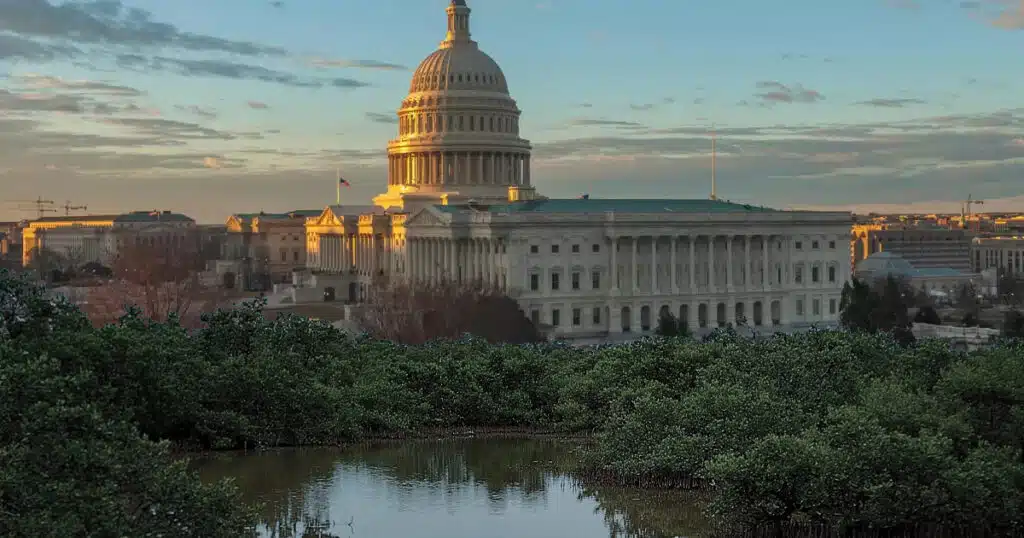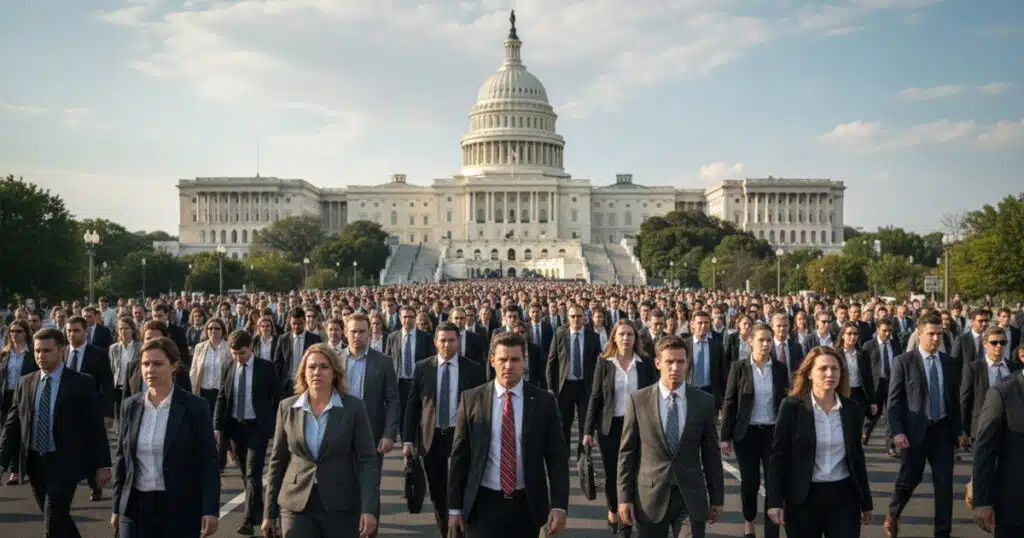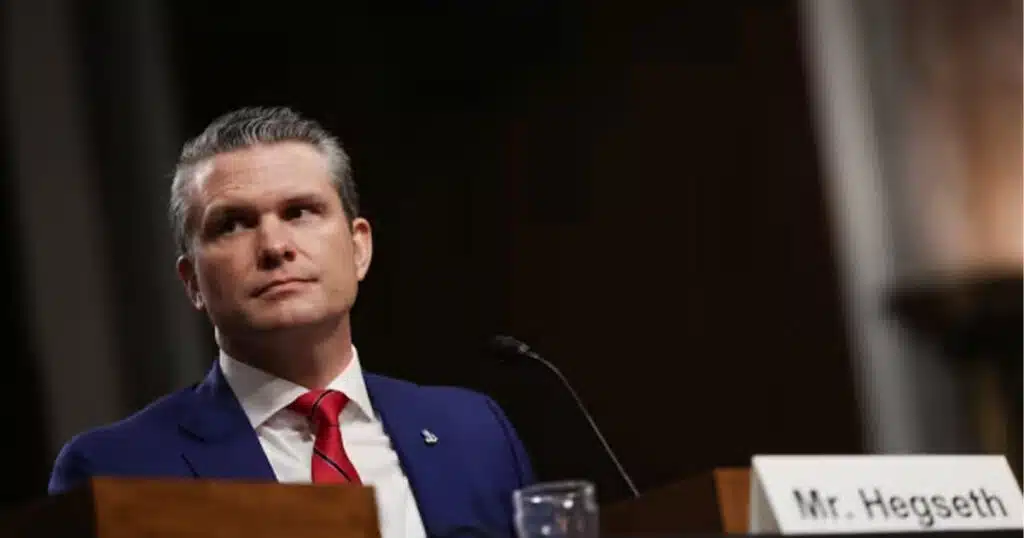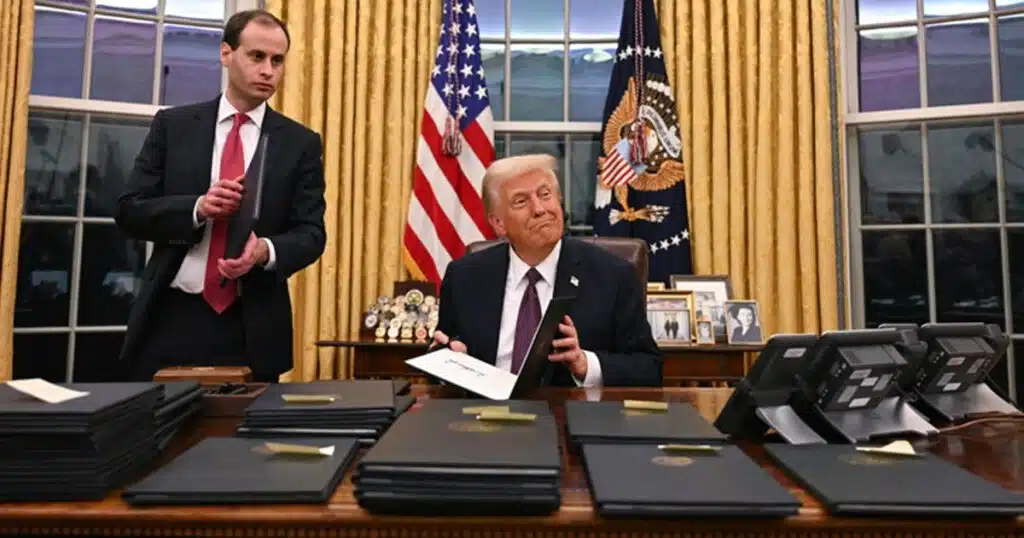
Government Shutdown Presents Huge Opportunity to Drain Swamp
It is easy to become lost in the fog of talking points about shutdowns. Here is the clear picture. The House has passed a short, clean continuing resolution at current spending levels, a simple extension designed to keep the lights on while the full year bills are finished. The Senate can pass it. The votes exist if seven Democrats, or Democrats plus the two independents who caucus with them, join Republicans to invoke cloture and send the bill to the President’s desk. If they choose not to, the shutdown that follows will be the consequence of that decision, not of procedural inevitability or House intransigence. Responsibility tracks control, and in this case, control lies with Senate Democrats, who can choose to prevent a shutdown by supplying the marginal votes for a clean CR.
Will such a shutdown harm the economy. Not in any lasting way. History is a better guide than rhetoric. In 2013, forecasters measured a temporary dent in quarterly growth that vanished once operations resumed. In 2018 and 2019, the longest lapse on record, analysts again found that the national economy absorbed the pause and recovered once employees received back pay and delayed purchases caught up. The pattern is simple. Shutdowns shift the timing of some spending and output, but they do not derail the trajectory of a $28 trillion economy. Markets know this, which is why asset prices rarely melt down over a short lapse. The public, understandably, dislikes drama. But drama is not disaster. A short, clean CR is available. If Democrats pass it, there is no drama at all.
A fair reader will ask whether President Trump actually prefers a shutdown. He has said he prefers to avoid one. That is wise. A shutdown is a blunt tool, and governing should be conducted with scalpels, not hammers. Still, two hard facts should be faced directly. First, shutdowns are not the economic cataclysm we are told to fear. The best available estimates suggest a reduction in quarterly growth on the order of tenths of a point per week, followed by a comparable rebound the moment government reopens. That is a rounding error in national accounts, and it underwrites a calm view of the stakes. Second, if Senate Democrats insist on forcing a lapse, the administration has a duty to use that moment to protect taxpayers. OMB has instructed agencies to map programs, projects, and activities that both lose funding and are misaligned with the President’s priorities, then to prepare lawful reductions in force. This is not gamesmanship, it is stewardship. If a program’s funding vanishes and no law compels it, the government should not treat it as permanent. A shutdown can expose those seams, then the RIF process can close them.
Some worry that this argument is a pretext for indiscriminate firing. It is not. Federal personnel law still governs. RIFs require notice, retention rules, and placement rights. Those rules exist to prevent arbitrariness, and no serious conservative wants to set them aside. The point is more basic. When Congress fails to fund an activity, agencies must set it down. If the world continues to turn, and the sky does not fall, that is evidence about priorities. Evidence should be used. A pause can reveal which roles are truly essential to life and property and which are administrative layers added in more plentiful years. The latter should not automatically snap back after every lapse. They should be reviewed. Some should be eliminated.
Critics say cuts of this kind would sap capacity and hurt services. The claim has force only if we ignore the composition of the federal workforce and the difference between front line operations and headquarters. About one fifth of federal civilian employees live and work in the Washington region, a concentration of headquarters and oversight roles far beyond any single state. By contrast, the air traffic controllers, Border Patrol agents, law enforcement officers, and medical professionals who protect life and property are spread across the country and are designated excepted during a lapse. The exception is not a moral judgment, it is a legal one, but it tracks common sense. The country can do without some memos. It cannot do without safety, security, and benefit checks. When agencies identify nonessential functions, the arrow points heavily toward administrative layers that reside in the capital and can be paused without immediate harm to the public. These capital public servants are overwhelmingly Democrat and form the core of a deep state resistance campaign against the President’s agenda. RIFing them would not only deliver cost savings but also eliminate political foes who actively resist needed change. A shutdown tests that claim against reality.
Here is where the prudential case meets the constitutional one. Congress holds the purse. Appropriations are yearly for a reason. Annual review forces prioritization, and prioritization forces tradeoffs. A clean CR is appropriate when the alternative is a lapse, because it buys time to complete that prioritization. Once full bills are done, the administration is still entitled to align execution with the President’s agenda, so long as statutes are respected. If, in the interim, Democrats choose a shutdown, they cannot complain if the executive declines to treat every paused activity as a sacred cow that must be revived regardless of cost or usefulness. Elections have consequences. So do appropriations lapses.
At this point many readers will worry about macroeconomics. Does a shutdown not risk recession. The answer, supported by years of data, is no. Temporary slowdowns during lapses are small, difficult to measure beyond a tenth or two on a quarterly growth rate, and almost entirely reversed when operations resume. Indeed, the private sector often adapts, rescheduling activity that involves federal interfaces and continuing the rest. It is important not to confuse loud anecdotes with large aggregates. A family missing a passport appointment, a park closing its visitor center, or a grant review panel shifting its meeting is frustrating. It is not a national crisis. The scale of the US economy is the key. Government spending is large, but in a shutdown many payments continue, including Social Security and Medicare, while essential functions remain staffed. The resulting macro effect is a ripple, not a shock.
There is also a political economy point that is rarely admitted. Agencies have strong incentives to exaggerate expected harm. Headlines about closed parks or delayed inspections are assets in a negotiation. Bureaucracies are rational actors. They highlight the visible and painful. They downplay the invisible and adaptable. The economist’s eye sees through this. If a function can be paused for weeks without a measurable macro effect, the burden of justification should rest on the side that wants to restore it unchanged. The default should not be automatic reconstitution but evidence based reform. That is what OMB’s mapping exercise demands, and it is what taxpayers deserve.
The fiscal case for using a shutdown to catalyze right sizing is straightforward. Federal compensation for the civilian workforce is a large recurring expense. Even modest trims produce real savings over a decade when salary, health benefits, and pension accruals are counted. The argument is not that personnel costs cause the deficit, they do not, but that every structural dollar saved frees room for core missions and reduces the need to borrow. Conservatives learned this lesson in the 1990s when bipartisan reforms used buyouts and attrition to shrink layers of middle management. The difference today is urgency. Debt service is now a dominant line item. Programs that cannot justify themselves should not survive on autopilot. A shutdown reveals which ones fail that test when funding lapses. The RIF process, used deliberately and lawfully, translates the revelation into lasting reform.
Set against these arguments is a plain alternative. Pass the clean CR. Keep paychecks flowing, keep airports and borders staffed with regular funding, and continue appropriations work in daylight. The House has already done its part, underlining that responsible governance is possible without surrendering leverage on the big questions. The Senate can do the same. Seven Democrats can prevent a lapse. There is no need for hostage metaphors. No one is asking for policy riders here. The ask is as minimal as it gets, fund the government at current levels for a short period while the larger fight continues. If Democrats refuse, they will have chosen a shutdown over a stopgap. That choice will reveal more about priorities than a thousand speeches.
Two final clarifications deserve emphasis. First, the President’s position is not contradictory. He prefers a funded government because that is orderly and pro growth. He also recognizes that a shutdown, if forced by the Senate, is not a catastrophe. The economy will be fine, the macro effects are minimal, and the government’s core functions will continue. Second, the administration’s RIF guidance is not a threat for its own sake. It is an instruction to behave as fiduciaries for the public. When a program loses discretionary funding and has no independent source of support, and when it fails to serve the President’s stated priorities, there is no reason to treat its staffing as permanently sacrosanct. Preparing to reduce those roles is not cruelty. It is policy discipline.
None of this requires cynicism about public service. Many federal employees perform indispensable work with skill and dedication. They deserve respect. They also deserve a system that is honest about priorities and outcomes. A government that cannot prune cannot grow where it should. A shutdown, if it occurs, will be the result of a Senate decision. If it does occur, it can also be the start of a more responsible civil service, one that is sized to mission rather than history, and that focuses on the protection of life, property, and liberty.
So the question before the Senate is exact. Will Democrats supply the votes to pass the clean CR the House sent over. If yes, the government stays open and the country moves on. If no, they will have chosen to stage a shutdown. Either outcome is acceptable in policy terms. One preserves stability. The other accelerates needed reform. Both are preferable to the status quo ante in which the swamp grows, debts rise, and accountability fades. The choice is theirs. The consequences, either way, will redound to the long term health of the republic.
If you enjoy my work, please consider subscribing
.



